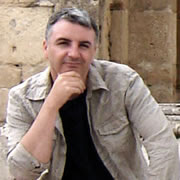In over the last few articles, I've discussed some voice techniques used to assist e-learning content producers create more effective, engaging, and immersive podcasts. I have also defined some heuristics or rules of thumb associated with the techniques:
Allow enough time to each learning point for it to be well understood. Then move on.
Anticipate how your audience could interpret a word and understand how it might affect interpretation of your meaning.
Now read on...
At the conclusion of yesterday's article I considered single word or syllable emphasis as a useful way to counteract a monotone delivery of content. This techniques is called 'projection,' and it's the third of the Four 'P's' of great podcast narration.
Our vocal range naturally becomes more dynamic in certain circumstances: we tend to speak more loudly when we're interested, passionate, or excited about something, and we tend to add more emphasis to key words or phrases when we're attempting to persuade a listener to understand our point of view; we speak softly when we want to create a sense of reflection.
Try this exercise: say the following phrase loudly:
LISTEN TO THIS!
Now, more softly:
Listen to this.
The mood changes instantly. The amount of projection you employ triggers very different reactions in anyone involved in a dialog with the speaker, and you can use the full dynamic range of the human voice when recording a podcast.
One thing to avoid at all costs is projection in the theatrical sense - actors on stage project to ensure the whole audience right to the back row, and up to the gods can hear what they're saying. Modern microphones can pick up and transmit the loudest and softest of sounds, and if you try to declaim your narrative in the mode of a stage thespian, you'll just sound shouty (if you're lucky) and even aggressive - either way, you're audience will hit the Stop button, regardless of the quality of your content.
Using the full dynamic range of your voice in concert with appropriate inflection and delivered at a good pace will really add meaning to your narrative.
'Michael Hanley learning consultant and blogger' tells you who I am and what I do. I can influence how I want someone to perceive me by modifying I phrase those three pieces of information, by changing the pace, pitch, and projection of the text.
So:
Michael Hanley/pause one beat/learning consultant and blogger emphasizes my profession
Michael Hanley/pause one beat/learning consultant and blogger tells you who I am
Michael Hanley learning consultant and blogger equally weighted, describes who I am and what I do.
Did you see the script direction /pause one beat/? A 'beat' is the duration of a pause in a narration. More properly called a caesura, it denotes an audible pause that breaks up a line of text. In most cases, a caesura is indicated by punctuation marks which cause a pause in speech:
- a comma
- a semicolon
- a full stop or period
- a dash
Punctuation, however, is not necessary for a caesura to occur.
How long should a beat be? Good question. In my part of the world, we usually tell people that it's the length of time it takes you to say "a thousand and one" (in your head of course). An American voice-over artist of my acquaintance assures me that where he's from (San Francisco), they say "one banana" to measure a beat. Use whatever works for you: the key thing to remember is to take you time, and concentrate on how you can elicit the maximum amount of meaning from your content.
More...
___________
References:
Ahern, S. (2006). Making Radio: A Practical Guide to Working in Radio. Allen & Unwin
--





No comments:
Post a Comment